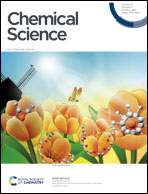Modulating the stacking modes of nanosized metal–organic frameworks by morphology engineering for isomer separation†
Abstract
Modulating different stacking modes of nanoscale metal–organic frameworks (MOFs) introduces different properties and functionalities but remains a great challenge. Here, we describe a morphology engineering method to modulate the stacking modes of nanoscale NU-901. The nanoscale NU-901 is stacked through solvent removal after one-pot solvothermal synthesis, in which different morphologies from nanosheets (NS) to interpenetrated nanosheets (I-NS) and nanoparticles (NP) were obtained successfully. The stacked NU-901-NS, NU-901-I-NS, and NU-901-NP exhibited relatively aligned stacking, random stacking, and close packing, respectively. The three stacked nanoscale NU-901 exhibited different separation abilities and all showed better performance than bulk phase NU-901. Our work provides a new morphology engineering route for the modulation of the stacking modes of nano-sized MOFs and improves the separation abilities of MOFs.



 Please wait while we load your content...
Please wait while we load your content...